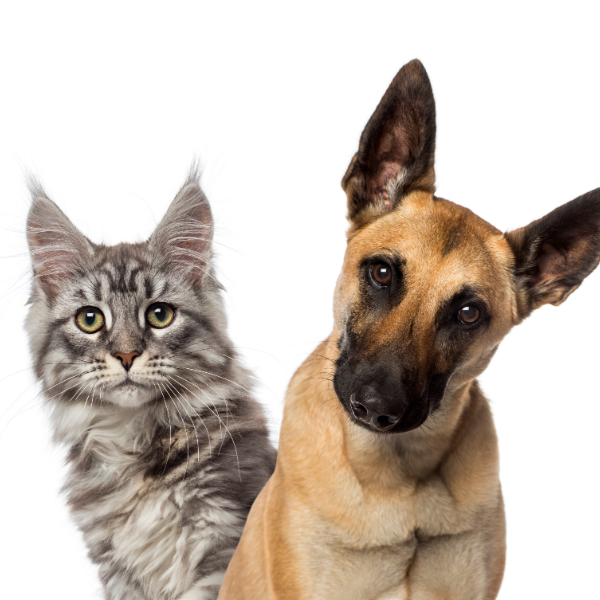What’s The Difference Between Dry Food and Raw Food?
The million-dollar question, really. Well, there are some pretty big differences! Dr. Billinghurst refers to dry food as ‘industrial/fake food.’ A bold statement. Dry foods are largely made up of industrial waste products from other industries. The animal relies on getting its energy primarily from carbohydrates, rather than from protein and fat. In other words, many of the commonly used and AAFCO-accepted ingredients used in industrial pet foods are, literally, garbage.
Raw diets focus on whole, raw foods with protein and fat as the main energy sources. They are often accused of not being in compliance with AAFCO standards by veterinarians who, in turn, teach their customers to question the raw diet. Some vets seem to feel that because raw foods do not comply with AAFCO standards that the pet owner would be putting his/her pet at risk by choosing to feed this type of food. Raw feeders and holistic vets know this couldn’t be further from the truth but this is a real misconception among today’s veterinary professionals and a huge topic of debate.
Is AAFCO the Nutrition Bible?
Dr. B believes that there is an urgent need to question this authority on pet food. A staggering 90% of all animals that develop cancer and other forms of a degenerative disease do so after a lifetime of eating industrial foods that follow AAFCO standards. He points out that the science that AAFCO uses to determine the minimum and maximum nutritional values in pet food is flawed and that it mentions nothing about raw, whole foods. We will talk more about this later on. He states, “AAFCO guidelines are a set of rules for using substandard materials to make industrial pet foods.” These standards are designed only for this purpose and do not apply to the whole, raw food diets. AAFCO fully admits that its standards do not apply to the whole, raw foods. It is a set of standards for making low-quality pet foods, not for offering a diet based on whole foods. So why should we be trying to follow it? And WHY would we want to feed this to our pets???
Unfortunately, no one wants to rock the boat by saying that vets are misinformed about raw diets but, sadly, many of them are. The education that they receive in school has little or nothing to do with raw diets. Often, raw pet food is seen in a negative light in the veterinary classroom. They are taught that, not only does raw pet food not meet AAFCO guidelines but that it contains harmful pathogens that can cause illness in domestic animals. They are also taught that industrial pet foods contain everything an animal may need to function at its best on a cellular level….according to AAFCO. A large number of vets blindly believe that if they learned it in vet school, it must be true. They do not question the apparently low standards set out by AAFCO. Each member of the growing holistic veterinary community had to come to terms with the fact that maybe not everything they learned was completely accurate. At the very least, it is worth investigating. When it comes to clinical experience, those vets who have come to recommend a raw diet have done so after observing the animals in their practice. Through examination and lab results they have realized that raw-fed pets are healthier, overall and lead much better quality lives than those who eat industrial/fake food diets. They have experienced the benefits of whole foods from a clinical standpoint and the number of holistic vets that recommend a raw diet is growing…..fast! It’s safe to say it’s no longer a fad.
The Raw Diet Goes Way Beyond AAFCO Standards!
So, do AAFCO standards apply to raw or to any pet food for that matter? This seems like a silly question but let’s look a little closer. When you look at a bag of industrial pet food, AAFCO confirms that it will be 100% complete and balanced according to them if it meets their standards. “Complete” meaning that it contains all the necessary nutrients for a dog or cat and “balanced” meaning that those nutrients are present in a balanced and accessible form. AAFCO also does not make any mention of phytonutrients, enzymes nor do they differentiate between natural-source and synthetic vitamins and minerals. If it’s not on their list, it is simply irrelevant and not considered of any nutritional value. AAFCO admits that their recommendations are purely a guess because we simply do not know all of the “essential” nutrients are for dogs and cats. As stated in their manual, the AAFCO standards are subject to change at any time…… Wait…what? So really, what they are saying is that they really have no idea. But we should still follow them! This is confusing.
Pet foods often sport a particular “life stage” on their label. For example, puppy food or maintenance food. AAFCO states that a maintenance diet “will not support growth, lactation or reproduction.” This is very disturbing. This means that this food is, as Dr. B so eloquently puts it, “the poorest of the poor.” So why would you consider feeding this type of food to your beloved pet? A raw diet filled with a variety of whole, fresh foods including meat, bone, and other biologically appropriate foods will support any life stage and will help to repair cells in the instance of degenerative disease rather than just slow down the process. Dr. Billinghurst is one of many vets that can attest to this from a clinical standpoint. It is safe to say that we humans still have a lot to learn about the physiological and genetic effects of nutrition when it comes to our canine and feline friends.
Flawed Science
Dr. B pointed out that there is good science and bad science. Good science refers to studies that are done out of curiosity, to find the truth as it appears without bias. Bad science is a science that is done to support a specific outcome. AAFCO was born out of the desire to turn industrial waste into valuable dollars. He calls it “flawed, non-science science.”
The following list of AAFCO guidelines are literally based on presumption, not fact:
-
Rawness vs. Heat treated is irrelevant – AAFCO admits that the commonly used industrial waste products used to make pet food are heated with extreme temperatures and that their nutritional value is compromised. They claim that this will be made up for by supplementing with a synthetic vitamin/mineral premix that must also be approved by them. It is assumed that this will contain everything your pet could ever need.
-
Any nutrient, eg. enzymes, and phytonutrients, that is not recognized by AAFCO have NO NUTRITIONAL VALUE whatsoever. This includes raw foods. This is not science-based thinking.
-
The principal energy source (whether it is protein, fat, or carbohydrate) has no bearing on the health of a dog or cat. In other words, we should not care about the evolutionary nature of the animal we are feeding.
-
All AAFCO committee decisions are “final and valid” BUT are “subject to change.” These contradicting rules cause me to assume that AAFCO guidelines are not to be taken very seriously.
If you actually sit down and read the AAFCO manual, it basically states that for all its thousands of words and rules that none of it really applies because it could change at any time. And it makes some pretty dangerous assumptions about food!
What are the Commonly Used Ingredients that AAFCO Approves?
These ingredients are completely acceptable forms of nutrition according to AAFCO:
-
Chicken, fish, liver meal
-
Chicken by-product
-
Peanut hulls
-
Cellulose
-
Soybean hulls
-
Vegetable oil
What do these foods actually consist of?
-
Chicken meal: largely made up of chicken bones, ground, and cooked at high heat for long periods of time. Not much nutritional value going on here since the bone-in-cooked form is highly indigestible. But AAFCO does not recognize this. So it’s ok.
-
Chicken by-product: made of chicken bones, feet, heads that are highly heat-treated.
-
Peanut & soybean hulls: this is considered a valid food source?????
-
Vegetable oil: usually a waste product of other industries, already heat treated several times. Rancidity or harmful chemical alteration is not considered an issue.
So again, I ask, why would you consider feeding this to your pet? No matter WHO-approved it!
A Guessing Game
AAFCO publically states that it has “insufficient data to recommend minimum and maximum levels for the following minerals: calcium, iron, magnesium, zinc, manganese, selenium.” Dr. B informed us that he feels they make numerous assumptions about food quality, especially when it comes to digestibility. Dr. B asks how anyone, especially veterinarians, put any faith into this?
Raw Foods Support Long Term Health Without AAFCO’s Approval
A diet of whole, raw foods is not hard to do nor should it be confusing. It should be simple. Real food supports homeostasis. In nature, if an animal behaves or looks a certain way, it ALWAYS has a purpose. If the food contains a particular configuration of nutrients, it is for a reason. Nature does not waste energy on useless systems. We must look to the ancestral diet of the dog and cat to make our decisions. A wolf does not read the AAFCO manual and then decides what he should be eating. Neither does a wild cat. They are driven to eat what they genetically programmed to eat. Looking at canine and feline diets in this way is REAL science based on the same principles as Darwin’s Theory of Evolution, molecular biology, and the sequencing of the genome.
It’s Up to You
Your pet is YOUR responsibility and you are the only one with the power to choose what you feed them. I hope that after reading this, you will peruse through our blog and learn more about the many benefits of feeding your pet a whole, raw food diet.



